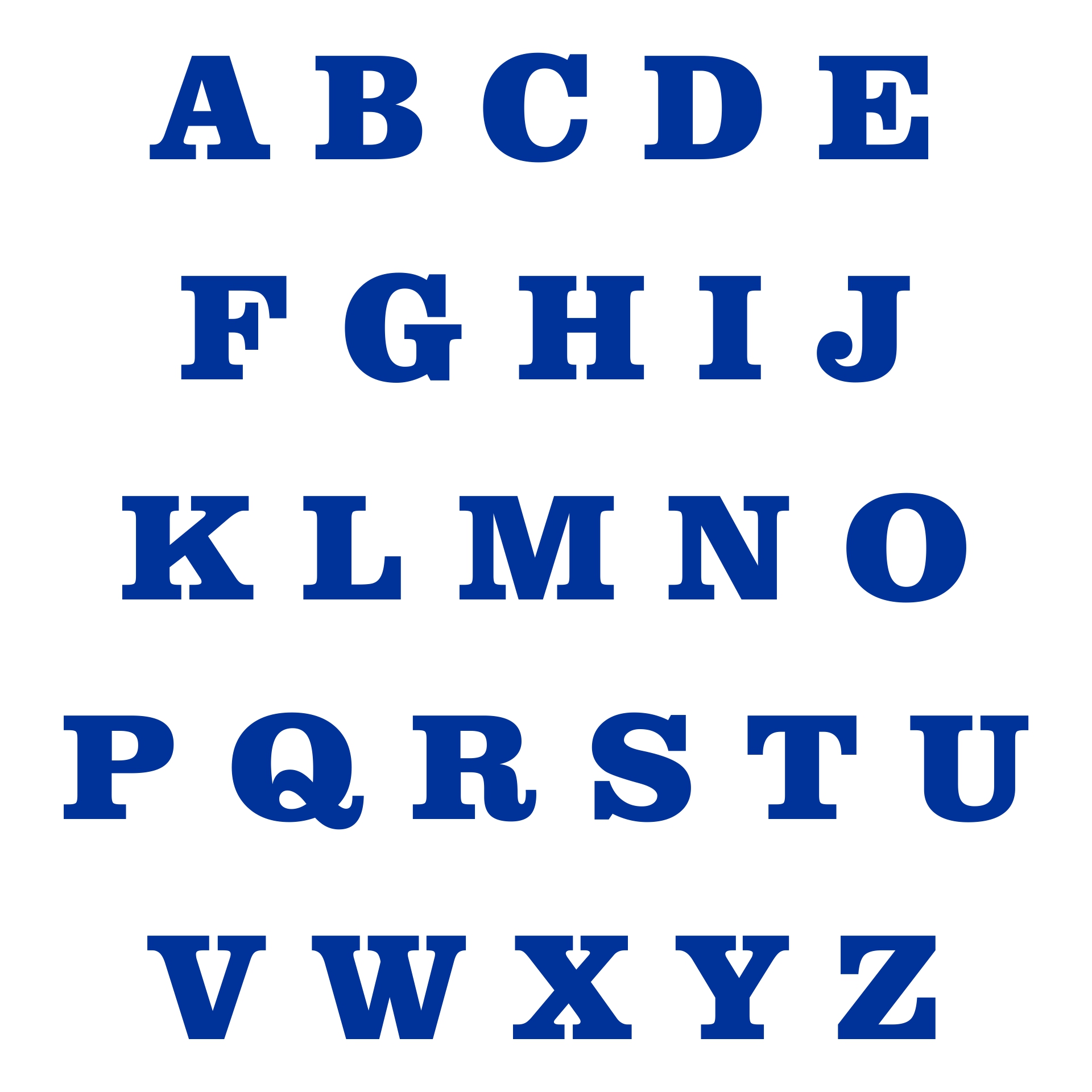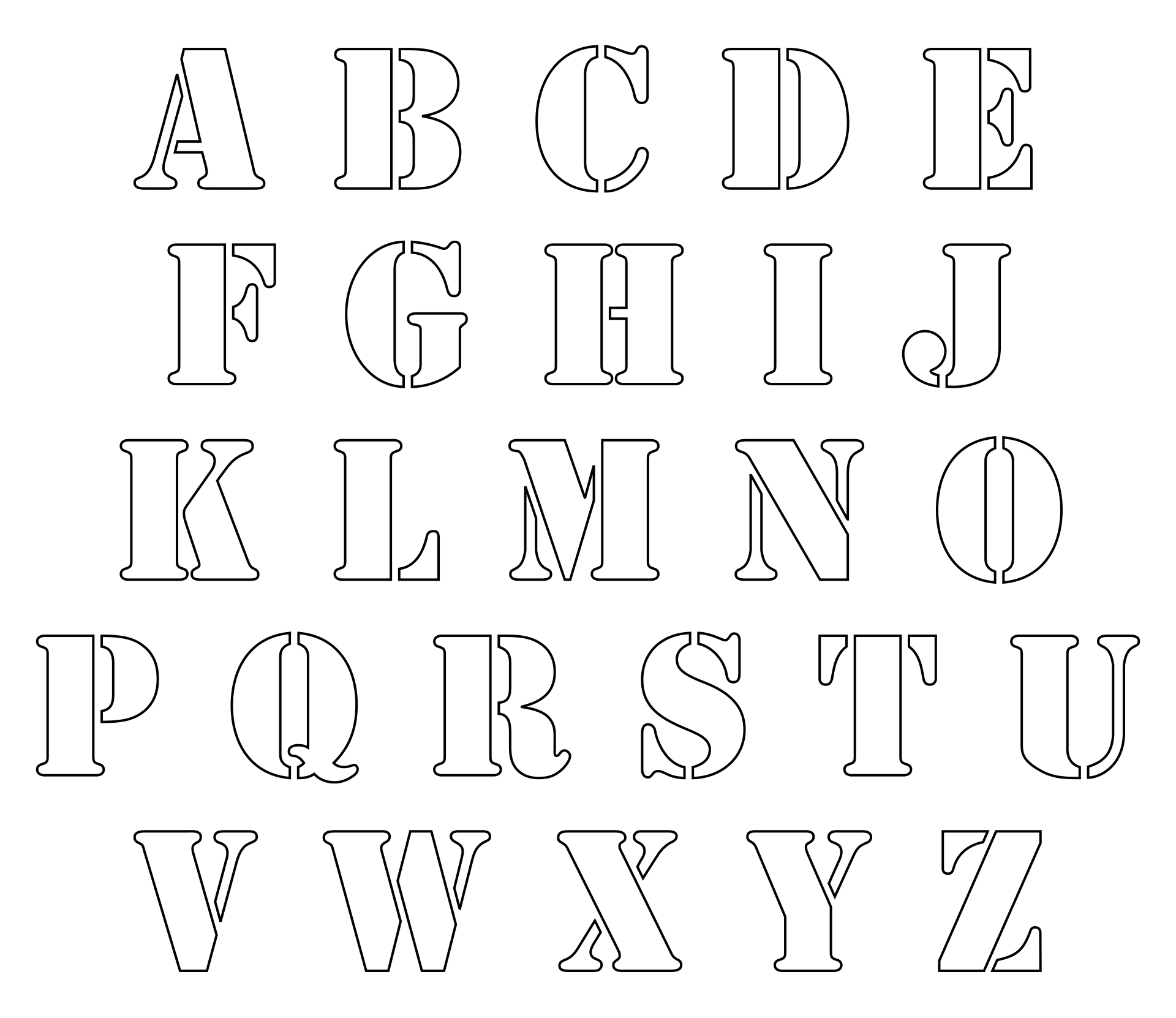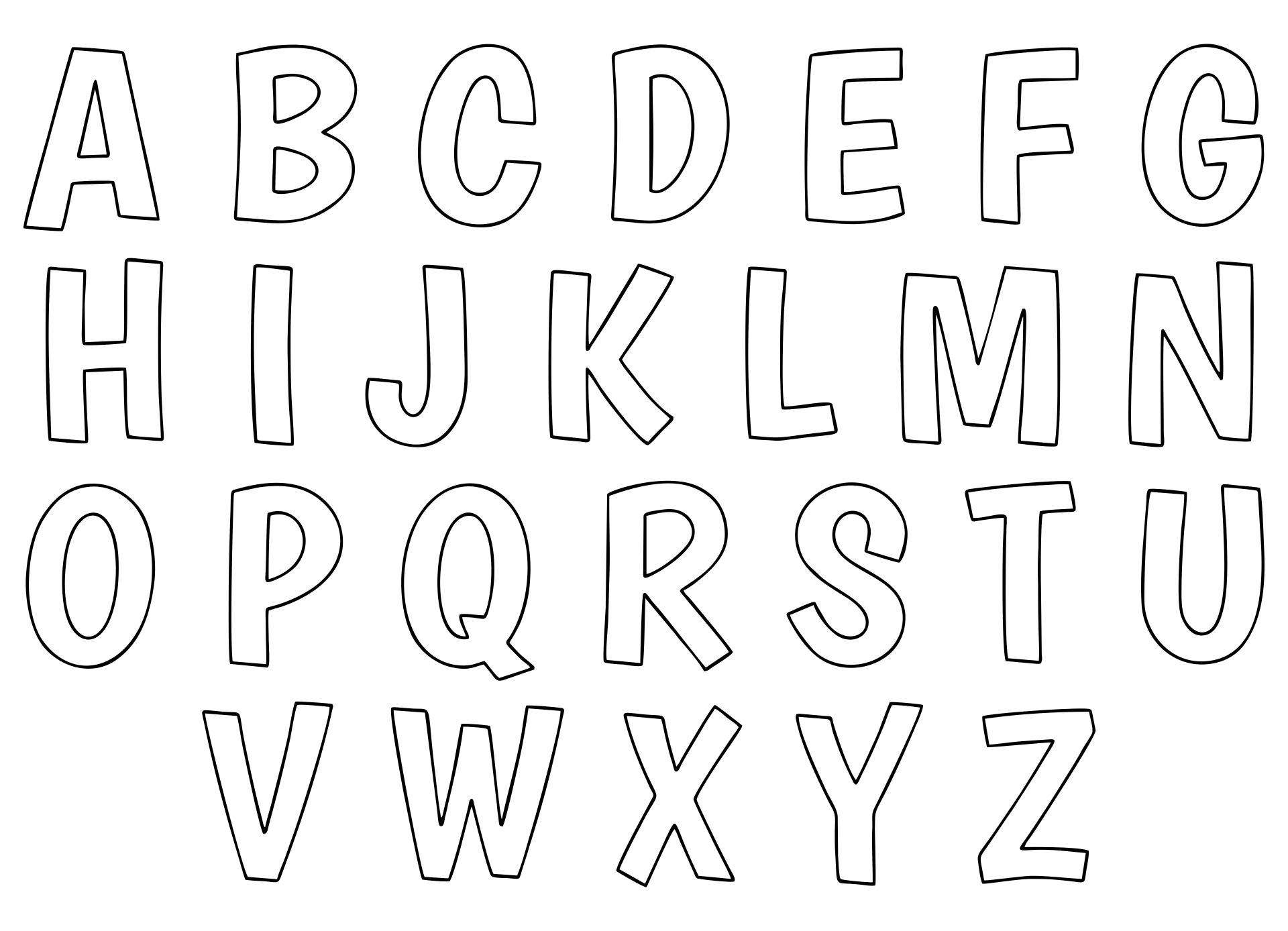Alphabet in spanish printable – Are you interested in learning the Spanish alphabet? Look no further! In this article, we will explore the world of the Spanish alphabet and provide you with printable charts and fun activities to make your learning journey enjoyable and effective.
Let’s dive in!
The Spanish alphabet is not only an essential part of the language but also a gateway to understanding the rich culture and heritage of Spanish-speaking countries. In this comprehensive guide, we will take a closer look at the Spanish alphabet, its history, and the key differences between the Spanish and English alphabets.
Introduction to the Spanish Alphabet: Alphabet In Spanish Printable

The Spanish alphabet is the set of letters used in the Spanish language. It is important because it represents the sounds used in the language and allows for proper pronunciation and spelling of words.
If you’re in need of a pen holder for your desk, why not try a 3d printable pen holder ? This printable pen holder is not only functional but also adds a touch of creativity to your workspace. With its 3D design, you can easily print this pen holder using a 3D printer.
Simply download the file from the provided link, load it into your 3D printer software, and start printing. Once printed, you’ll have a sturdy pen holder that can hold all your pens and pencils. Say goodbye to messy desks and hello to a stylish and organized workspace with this 3D printable pen holder.
The Spanish alphabet has evolved over time. Originally, it was based on the Latin alphabet, which was used by the Romans. However, there have been changes and modifications to accommodate specific sounds in Spanish.
History of the Spanish Alphabet
The Spanish alphabet was influenced by various cultures and languages throughout history. The Romans introduced the Latin alphabet to the Iberian Peninsula, which is now Spain. Over time, the language evolved, and the Spanish alphabet began to take shape.
One significant change to the Spanish alphabet occurred in 2010 when the Royal Spanish Academy (RAE) modified the alphabet to include the letters “ch,” “ll,” and “rr” as individual letters. Previously, these were considered digraphs or combinations of two letters.
Differences between the Spanish and English Alphabets
While both the Spanish and English alphabets share some similarities, there are notable differences between the two.
One major difference is the inclusion of letters. The Spanish alphabet has 27 letters, while the English alphabet has 26. The additional letter in Spanish is “ñ,” which represents the sound “ny” as in the word “cañón” (canyon).
Another difference is the pronunciation of certain letters. For example, the letter “c” in Spanish is pronounced as “th” in words like “gracias” (thank you). Additionally, the letter “j” is pronounced as a strong “h” sound in Spanish, as in the word “jamón” (ham).
Furthermore, the Spanish alphabet does not include certain letters found in the English alphabet, such as “w” and “k.” These letters are only used in loanwords or foreign words in Spanish.
Printable Spanish Alphabet Charts

Printable alphabet charts are a useful tool for learning the Spanish alphabet. These charts provide a visual representation of the letters of the alphabet, allowing learners to easily reference and practice their knowledge of the Spanish alphabet. They can be printed out and used as a reference guide or as a study aid.
To create a printable Spanish alphabet chart, you can follow these steps:
- Start by creating a table with two columns and as many rows as there are letters in the Spanish alphabet.
- In the first column, write the letters of the Spanish alphabet in uppercase or lowercase, depending on your preference.
- In the second column, write the corresponding pronunciation of each letter. This can include the letter’s name and its sound.
- You can also include any additional information or examples that may be helpful for learners, such as words that start with each letter.
- Once you have filled in all the information, format the table to make it visually appealing and easy to read.
- Finally, print out the chart and you will have a printable Spanish alphabet chart ready for use.
Benefits of using printable charts for learning the Spanish alphabet, Alphabet in spanish printable
Using printable charts for learning the Spanish alphabet offers several benefits:
- Visual Aid:The visual representation of the alphabet helps learners to easily associate the letters with their corresponding sounds.
- Convenience:Printable charts can be easily accessed and used anytime, anywhere. They can be printed out and carried along for on-the-go learning.
- Reference Guide:These charts serve as a quick reference guide for learners to look up the pronunciation of any letter whenever they need it.
- Practice Tool:Learners can use the charts to practice pronouncing the letters of the Spanish alphabet and improve their pronunciation skills.
- Additional Information:Printable charts can include additional information, such as examples of words that start with each letter, providing learners with more context and vocabulary.
By utilizing printable Spanish alphabet charts, learners can enhance their understanding and mastery of the Spanish alphabet in a convenient and effective way.
Fun and Interactive Spanish Alphabet Activities

Learning a new language can be challenging, but incorporating fun and interactive activities can make the process more enjoyable and effective. By engaging in different activities, learners can enhance their understanding of the Spanish alphabet and improve their pronunciation skills.
Here are some exciting activities that can help in learning the Spanish alphabet:
1. Alphabet Song
One of the most engaging ways to learn the Spanish alphabet is through music. Singing the alphabet song in Spanish can help learners memorize the letters and their pronunciation. There are numerous versions of the Spanish alphabet song available online, making it an enjoyable and interactive activity for learners of all ages.
2. Alphabet Flashcards
Using alphabet flashcards is a great way to reinforce letter recognition and pronunciation. Create a set of flashcards with each letter of the Spanish alphabet and its corresponding pronunciation. Practice flipping through the flashcards and saying the letter out loud.
This activity can be done individually or in groups, allowing for interactive learning.
3. Alphabet Scavenger Hunt
Organize an alphabet scavenger hunt to make learning the Spanish alphabet more exciting. Hide objects or pictures representing each letter of the alphabet around the learning area. Provide learners with a list of the letters they need to find and let them search for the hidden items.
As they find each item, they can say the letter out loud, reinforcing their recognition and pronunciation skills.
4. Alphabet Puzzle
Using an alphabet puzzle can be a fun and hands-on activity to reinforce letter recognition. Provide learners with a puzzle that features the Spanish alphabet. As they put the puzzle pieces together, they can say the letters out loud, strengthening their understanding of the alphabet sequence.
If you’re looking for addition flash cards that you can print, check out this addition flash cards printable link. These printable flash cards are a great tool for helping children practice their addition skills in a fun and interactive way.
With colorful designs and clear numbers, these flash cards make learning math enjoyable. Simply print them out, cut along the lines, and you’ll have a set of flash cards ready to use. Whether you’re a teacher looking for classroom resources or a parent wanting to support your child’s learning at home, these printable flash cards are a convenient and effective option.
5. Alphabet Memory Game
Create a set of cards with each letter of the Spanish alphabet, duplicating each letter to make pairs. Lay the cards face down on a table and take turns flipping over two cards at a time. The goal is to find matching pairs of letters.
As players flip over the cards, they should say the letter out loud. This game not only enhances letter recognition but also improves memory skills.
The Importance of Fun Activities in Language Learning
Incorporating fun activities in language learning is crucial as it helps make the learning process enjoyable and engaging. Fun activities grab learners’ attention and motivate them to actively participate in the learning process. When learners are engaged and having fun, they are more likely to remember and retain the information they are learning.Interactive
activities also provide learners with opportunities to practice their language skills in a natural and meaningful way. By engaging in activities that require them to speak, listen, read, and write, learners can develop their language proficiency more effectively. Fun activities create a low-pressure environment where learners can experiment, make mistakes, and learn from them.In
conclusion, incorporating fun and interactive activities is a great way to enhance the learning of the Spanish alphabet. Activities such as singing the alphabet song, using flashcards, organizing a scavenger hunt, solving puzzles, and playing memory games can make the learning process enjoyable and effective.
So, let’s make learning the Spanish alphabet a fun and interactive adventure!
Tips for Teaching the Spanish Alphabet to Children

Teaching the Spanish alphabet to children can be a fun and engaging experience. By using effective methods and age-appropriate activities, you can help children learn and retain the alphabet more easily.When teaching the Spanish alphabet to children, it is important to make the learning process interactive and enjoyable.
Here are some tips to help you engage children in learning the alphabet:
1. Sing songs and rhymes
Introduce the Spanish alphabet through catchy songs and rhymes. By incorporating music and rhythm, children can learn the alphabet in a fun and memorable way. Encourage them to sing along and repeat the letters.
2. Use visual aids
Visual aids such as colorful flashcards, alphabet charts, or posters can help children visualize and remember the letters of the Spanish alphabet. Display these visual aids in the learning environment and reinforce the letters through regular exposure.
3. Play alphabet games
Engage children in interactive alphabet games that involve letter recognition, matching, or sorting. For example, you can create a scavenger hunt where children have to find objects that start with each letter of the Spanish alphabet. This will make the learning experience more enjoyable and hands-on.
4. Incorporate technology
Utilize educational apps or online resources that offer interactive activities for learning the Spanish alphabet. There are many apps and websites available that provide engaging games, quizzes, and puzzles to help children practice and reinforce their knowledge of the alphabet.
5. Read alphabet books
Introduce children to alphabet books in Spanish that focus on each letter individually. These books often incorporate illustrations and words that start with the corresponding letter. Reading these books together will not only teach the alphabet but also expand children’s vocabulary.
6. Practice writing
Encourage children to practice writing the letters of the Spanish alphabet. Provide them with writing materials such as pencils, crayons, or markers and guide them in forming each letter correctly. Practice tracing the letters and gradually move towards independent writing.By
implementing these tips, you can create a stimulating and effective learning environment for teaching the Spanish alphabet to children. Remember to make the learning process enjoyable and celebrate their progress along the way.
Resources for Learning the Spanish Alphabet

Learning the Spanish alphabet can be an exciting and enriching experience. There are various resources available that can help you master the alphabet and improve your pronunciation skills. Whether you prefer online courses, books, or websites, there are options for every learning style.
In this section, we will discuss some of the best resources for learning the Spanish alphabet.
Online Courses
Online courses provide a structured and interactive learning experience. They often include video lessons, quizzes, and exercises to reinforce your understanding. Some popular online platforms for learning the Spanish alphabet include:
- Duolingo : Duolingo offers a free and gamified approach to learning Spanish, including the alphabet. The lessons are bite-sized and suitable for beginners.
- FluentU : FluentU provides authentic Spanish videos with interactive subtitles. It offers a unique way to learn the alphabet by immersing yourself in real-life content.
- Rosetta Stone : Rosetta Stone is a well-known language learning platform that offers comprehensive Spanish courses. Their interactive lessons can help you learn the alphabet and develop your overall language skills.
Books
Books can be a valuable resource for learning the Spanish alphabet. They often provide detailed explanations, examples, and exercises to practice your reading and pronunciation. Here are some recommended books for learning the Spanish alphabet:
- Spanish for Dummiesby Susana Wald: This book is designed for beginners and covers the basics of Spanish, including the alphabet. It includes audio recordings to help you perfect your pronunciation.
- The Everything Learning Spanish Bookby Julie Gutin: This comprehensive book covers all aspects of learning Spanish, including the alphabet. It provides useful tips and exercises to enhance your language skills.
- Practice Makes Perfect: Spanish Alphabetby Dorothy Richmond: This workbook focuses specifically on the Spanish alphabet. It offers a variety of exercises to reinforce your knowledge and improve your pronunciation.
Websites
Websites offer a wide range of resources for learning the Spanish alphabet. They often provide audio recordings, interactive exercises, and downloadable materials. Here are some recommended websites for learning the Spanish alphabet:
- SpanishDict : SpanishDict is a comprehensive online Spanish dictionary that also offers lessons on various topics, including the alphabet. Their lessons include audio recordings and interactive quizzes.
- StudySpanish : StudySpanish provides free grammar lessons and exercises for learning Spanish. They have a dedicated section on the alphabet, where you can practice your pronunciation with audio recordings.
- Fluent in 3 Months : Fluent in 3 Months is a language learning blog that offers tips, resources, and inspiration. They have a section on learning the Spanish alphabet, which includes useful articles and recommended resources.
By utilizing these resources, you can enhance your learning experience and effectively master the Spanish alphabet. Whether you prefer online courses, books, or websites, these tools will provide you with the necessary knowledge and practice to succeed. Happy learning!